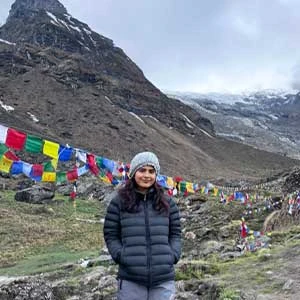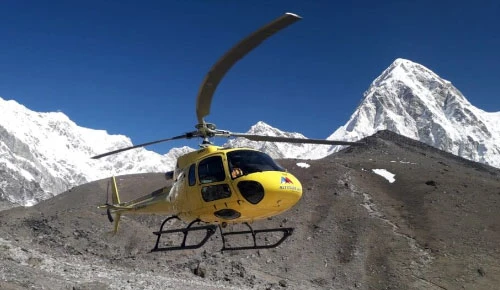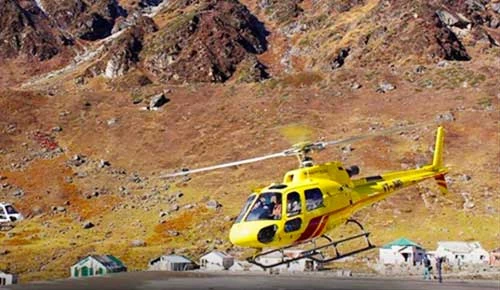Helambu Trekking Route Map in Nepal: Trails, Villages & Travel Tips
The Helambu is located northeast of Kathmandu and at the base of the Langtang mountains. It is a beautiful escape to the Langtang area, which has become very popular for its nature-friendly and peaceful trails that run along the hills and villages. The hike to Helambu is renowned for its silence, the friendly Hyolmo community, and amazing vistas of the mountains. Therefore, it is the secret of those who want a short and calm trek in the Himalaya. It is a simple trek, but it is still necessary to be ready for the journey, and this starts by familiarizing oneself with the Helambu trekking route.
One aspect that numerous adventurers fail to acknowledge is that the route has less elevation in comparison with a few more challenging treks, for example, the Langtang or Everest. However, Helambu's routes can also surprise hikers with their variations, forcing them to deal with steep climbs and descents, as well as areas far from people and forests that are confusing without a guide. A Helambu trek route map is also vital, as it helps one choose a rest day, lodging, and route.

Whether you decide to do the trek by yourself or with a guide, the daily Helambu trek itinerary along with the main checkpoints and altitude will give you a clearer idea of how to organize your energy and what to expect. The route that winds from Sundarijal or Melamchi Pul through the forests and fields has been the focus of nature lovers throughout the year, as each of the landscapes has its unique charms.
This blog will cover the entire Helambu trek map and route layout, as well as describe the overall directional flow of the hike and tips on a first-time trek. This guide assures you that the Helambu Trek is within reach, whether you're planning your next adventure or just browsing.
Table of Contents
What Does the Helambu Trekking Route Show?
The Helambu trek route map is a representation of your entire Himalayan journey in the Langtang Region of Nepal. It provides a detailed description of the journey from Sundarijal, which is near Kathmandu, to Sermanthang, which is home to the famous villages of Chisapani, Kutumsang, Tharepati, and Tarke Gyang. Trekkers can see what to expect, such as breathtaking ridgelines, forest trails, or traditional Tamang villages, thanks to the map that shows all of the stops.
Maps are best for showing the trail's ups and downs. Knowing where the big ups and soft downs are is key, even more so as the Helambu trail moves through mid-hills and goes up over 3,500 meters close to Tharepati. A map is excellent for daily plans, helping you set your speed and keep your power. Also, the map points out close spots like rivers, hanging bridges, places for prayer, and spots to look out. Such markers present a thrill and enable you to plan for special moments on the trail. Others even depict potential alternative routes or extension routes to Gosaikunda or the Langtang region—such that the Helambu trail forms a subset of the larger information network of treks.
For those booking through a guided tour, the route map also serves as a helpful reference when discussing daily plans with your guide or group. Whether you’re a visual planner or simply want to feel more confident in your journey, the Helambu trek route map gives you a clearer sense of direction, distance, and beauty that lies ahead.
Trek Route Map: Key Villages and Landmarks
The Helambu trek is a journey into the picturesque villages, the wooded ridges, and cultural amenities that make the trek so unique. Every point on the path or line from the traditional Sherpa habitations to the all-embracing Himalayan peaks has its own delight. To make the trip clear to you, here is the rundown of the normal 5-day circuit by days:
Day | Route | Distance | Walking hours per day | Highlights |
1 | Sundarijal to Chisopani | 2 km, | 5–6 hrs | Lush forests, waterfalls, terraced farms, sunset views |
2 | Chisopani to Kutumsang | 10 km | 5 hrs | Dense rhododendron & oak forests, first panoramic mountain views. |
3 | Kutumsang to Tharepati | 10 km, | 5–6 hrs | Highest point (3,650m), sweeping views of Langtang, Ganesh Himal, and Dorje Lakpa |
4 | Tharepati to Tarkeghyang | 12 km, | 6 hrs | Cultural hub, monasteries, apple orchards, traditional Sherpa architecture |
5 | Tarkeghyang to Kathmandu | 15 km, | 5–6 hrs | Gentle descent through terraced fields, serene hilltop views, final reflections |
Major Landmarks During Helambu Trekking
Sundarijal
It is a usual entry into the Helambu trekking. Sundarijal lies on the outskirts of Kathmandu and is famous (along with its forests and waterfalls) as the gateway to the Shivapuri National Park. On the way up, you will go up stone steps through Tamang villages and terraced farms as you start the journey. It is a cool means of going out of the crowded town to the foothills of the Himalayas.
Chisopani
Chisopani is one of the most beautiful resting places early into the trek and has the first open mountain view. Here, on a clear morning, trekkers can get a glimpse of Langtang Lirung and Ganesh Himal as well. The village is located on a spot on a ridge that is in a forested land that makes it a quiet and peaceful place to acclimatize and feel rejuvenated.
Kutumsang
Continuing to trek along the Helambu region, the trail leads you to Kutumsang, which is a major entrance point of Langtang National Park. The village is a transition both in elevation and terrain. There will be fewer people as well as more alpine forests. Many trekkers start to feel the beauty that can only be compared to the primitive remoteness of the Helambu trekking route at Kutumsang.
Tharepati
Tharepati is 3,600 meters high and thus the highest point on the Helambu trek and a true highlight of the trek. Tharepati provides an extensive vista of Langtang and Dorje lakpa. The village itself is a small one containing only several lodges, but the landscape is huge and unforgettable. It is also an excellent spot to take a breather and inhale the high Himalayan air and then go down to Tarke Gyang.
Tarke Gyang (or Tarkeghyang)
This Sherpa village is popularly referred to as the cultural gem because it is known as the capital of the Helambu. It is one of the largest settlements on the trail, and it is known to be famous due to its old Buddhist monastery, wooden houses, and orchards of apples. Here you will experience the transition of local culture, and you will come across the Tibetan Buddhism tendencies more practically expressed in the building structure, prayer flags, and chortens. It is somewhere you can wind down, discover, and get into the soul of the mountains.
Sermathang
This village is a quiet and peaceful place and is usually the last big stop on the way to Kathmandu. Sermathang has fewer people and is more authentic, with nice homes and great views of the hilltop. It is a popular place for hikers to think about their way and what they have met on the way and also to get one more experience of fresh mountain air and the warmth of Sherpa hospitality before going back to the city. If one is lucky enough to find a good place on a clear day, then a view of the Jugal range and even of Everest at a distance could be possible.
Each of these villages along the Helambu trek route adds something meaningful to the journey. From cultural immersion to high mountain vistas, the route map isn’t just a path—it’s a story that unfolds one step at a time, and here is a quick look at the typical 5-day route:
Day 1: First, you would drive from Kathmandu to Sundarijal, which is a well-employed door for most of the nearby treks. After that, you journey to a village called Chisopani that is famous for its pine wood forests and fantastic sunset views. The hike and nature on your first day are just right to get you comfortable with the trail.
Day 2: After Chisopani, the journey to Khutumsang (also Kutumsang) goes on. Along the way you pass thick rhododendron and oak forests and also have your first wide mountain views. Khutumsang is a calm village that is recognized for its unspoiled nature and old-style way of life.
Day 3:At Khutumsang, you trek to Tharepati, the highest point in the path of some 3,600 meters. Tharepati is known for its spectacular Himalayan views, where even Everest can be seen on clear days alongside Langtang and Ganesh Himal. It is an ideal place to relax overnight or have a scenic rest.
Day 4: The journey is followed by the descent to a major cultural center of the Helambu region, Tarke Ghangyul (Tarkeghyang). Buddhist monasteries, traditional architecture and local hospitality are abundant in this village. It provides an opportunity to get to know the close-up culture of Hyolmo.
Day 5: The final day takes you from Tarkeghyang to Sermanthang (Sermathang) before heading back to Kathmandu. This section winds through terraced fields and forests, providing a gentle descent and scenic variety as you finish your trek.
The entire route consists of various types of terrain like wooded tracks, ridgelines, and small roads through the village and also features moderate elevations ranging from approximately 1,500 meters at the trail's start to 3,600 meters at Tharepati. The combination of nature at its best and local culture provided the tourists on the Helambu trek with a highly satisfying travel experience.
Why a Route Map Is Essential for the Helambu Trek?
- Clear navigation through varied terrain
- Better planning and time management
- Safety during unpredictable weather
- Support for independent trekkers
- Enhances understanding of landmarks
- Backup in areas with limited mobile signal
- Facilitates active participation with guides
- Boosts overall confidence
- Helps identify water sources
- Assists in emergency route planning
- Aids altitude acclimatization awareness
- Prevents accidental detours
- Improves group coordination
- Supports wildlife and nature spotting
- Enables estimation of daily distances and elevation
Final Words
The Helambu trek gets a superb mix of accessibility, culture, and scenic beauty. This is in very close proximity to Kathmandu city. You can trek through rhododendron forests, cross yak pastures, or stay in one of the quiet Sherpa villages. Yet every part of the Helambu trail offers a unique marvel that completes your adventure. It works perfectly well for anybody seeking a soulful experience in the Himalayas without having to go on long, grueling, high-altitude journeys.
If you’re ready to explore this hidden gem, our Helambu Trek - 5 Days is crafted to suit every pace and preference. With experienced local guides and seamless logistics, Nepal Trek Adventures makes your journey smooth from start to finish.








